In the west of the country, there is a small paradise surrounded by mountains: the Makhomalong valley. This green valley surrounded by the Maloti Mountains is well sheltered from the neighboring and bustling Maseru, some 80 km away. Here the sound of horns, the streets full of motorbikes and cars is not present. The absolute tranquility typical of the country is back: birds singing, crickets chirping, and the breeze of the wind passing through the vegetation. On the horizon, you can see small villages scattered throughout the valley with no more than 15 or 20 mokhoros or traditional Basotho houses with people walking along the dirt roads that connect them or riding the country’s typical transport: the horse (if you want to see our horse riding experience in Lesotho, click here). Despite being talking about the lowlands of the country, the Lowlands (remember that the lowest point in Lesotho is at 1,000m), in this valley we are more or less at 2,000m. So that’s why they call the country, the kingdom of heaven, beautiful, right?
One of these villages in the valley is called Malealea and since 1905, there is evidence of its existence since an Englishman named Mervyn Smith settled there by building a “Trading Center”, a commercial point that made the town grew around him. This commercial outlet was bought by a couple from Lesotho who wanted to turn it into a hostel. Finally, over the years, this site has become a point of reference due to the little tourism that comes to the country, the Malealea Lodge. Later, we will tell you more about this lodge that has a very interesting and beneficial community project for the town and its people.
In this area in addition, nestled in the Pitseng gorge, you will be able to see and marvel at the Tohlong cave paintings, a set of San paintings located in three caves dating back 1000 years (it is not well known, some they say 500 years); and you can also walk through the Makhomalong Valley following the Makhaleng River until you reach the Botsoela Waterfall with great views. A spectacular paradise that will not disappoint you!
How to get there?
To reach the Makhomalong Valley and Malealea, from Maseru, follow the A2 road, which passes through Mantsebo and then turn left onto the B40. Once you are on this road, you will have to follow it until you reach the mountain pass of the “Gates of Paradise Pass”, where suddenly between mountains, the road reaches its highest point and you can see the whole valley of Makhomalong and the Maloti Mountains in the background. It is at this moment that you see that you are really entering paradise. Once past this point, you just need to follow the dirt road (with a few potholes and in poor condition) that will take you to the village of Malealea and to the lodge.
Throughout this route, there is a bridge that goes over the river that at the time we crossed it was broken and they had taken an alternative route down. We were able to get through there without any problems. Sometimes, however, this alternative route, with the rains, floods and it is not possible to pass. We recommend that you write to Malealea lodge before going there, and ask about the state of the road at this point in question. In his website, they have the alternative route well explained. There are two alternative routes from Semonkong that are only suitable for ATVs, one passes through Roma and the other passes through Makhakhe.
When to visit?
The warm season or summer in Lesotho runs from October to March. The hottest month is January. Temperatures between 10-18ºC can be reached. The winter or cold season in the area runs from March to October, with July being the coldest month of the year. Temperatures usually range from -3ºC to 10ºC (but keep in mind that the higher the altitude, the colder it will be).
The problem, however, is that the rainy seasons coincide with the warm temperature, so we will find more rain when the temperature is better. The month that rains the most is also January and the months that rain the least are June-July.
For us, the most advisable months would be April and May, as it is relatively dry and not too cold, or from September to October, as the summer rains have not yet started.
However, you know that time is relative and changing these days. We visited Lesotho in April, theoretically one of the best months to do it and yet, the week before going up, it had been raining heavy all week.
What to do in Malealea and Makhomalong valley?
– Walk to the Botsoela waterfall
It is the most famous excursion that can be done in this area. The walk takes about 4 hours round trip from Malealea Lodge to reach the wonderful Botsoela Falls. The route itself is not difficult, it passes through dirt roads between Basotho villages and an impressive landscape.
The first part, on the way, is downhill, as you have to enter the Pitseng gorge, until you reach the Makhaleng river. From this point, you will have to follow the river and cross it at certain points, until you reach the final destination: the Botsoela waterfall, which is about 40 meters high. There you can relax for a while enjoying the water and the views, and gather strength, for what will be the return, a continuous climb until the town of Malealea again. You can do this route with a local guide (in this way, you will also be promoting the local economy) which you will find at Malealea Lodge. The price of this excursion is 100 malutis per person.
– Marvel at the Tohlong cave paintings
Another beautiful excursion to do in this area is to go see the Tohlong rock paintings which are located in three hanging caves in the middle of the Pitseng Gorge. The cave paintings date from about 1000 years ago, although the period is not well known, and were made by the San people. The cave paintings represent hunting, daily life and the animals that could be seen in the area during the time of this first civilization that lived there. Try to go when the sun is not directly on the paintings so you can see them better. You can do this route with a local guide (in this way, you will also be promoting the local economy) which you will find at Malealea Lodge. The excursion lasts about 3 hours and costs 75 malutis per person.
– Do the full-day circular route that connects the Tohlong rock paintings and the Botsoela waterfall
We decided to do these two points, the most famous in the area, in a day trip. It is a very beautiful excursion that goes through the Pitseng Gorge and follows the river. It takes approximately 5 to 7 hours, depending on how many times you stop or if you spend a lot of time at the waterfall to swim. So count a whole day taking your lunch with you, if you want to do like us.
We did it with a local guide, Rakitsa, who took us through the beautiful landscapes of his home. This local guide is part of the community project that the Malealea lodge has, which trains people from the village in order to empower them so that they are the ones who benefit from the tourism that the area receives. The guide receives part of the money you give and the other part goes to the lodge, so that it can continue to carry out the community projects it has. You can do this route with a local guide (in this way, you will also be promoting the local economy) which you will find at Malealea Lodge. The price of the excursion is 125 malutis per person.
– Listen to traditional Basotho music
Every evening, after the wonderful sunset that can be seen from the courtyard of the Malealea lodge, there is the possibility to listen to a choir of Basotho music from the villagers and also a local music band: The Malealea Band or the Sotho Sound. These two performances take place on the lodge’s largest esplanade with the Maloti mountains in the background. They play traditional country music, with instruments made from recycled materials. The musicians are shepherds during the day who take care of their herd of cows or sheep, and who in the evening, to get an extra salary, perform for people interested in hearing country songs. This activity is also part of the projects carried out by the lodge to empower local people and make them participate in the life of the accommodation, making them feel part of the project. At the end of the performance, if desired, a small voluntary donation is made to the musical groups.
– Do a pony trekking in the area
Another star activity to do is the pony excursion in the area. We didn’t do this activity since a few days ago we had just experienced one of the most spectacular experiences of the trip to the Mokhotlong area: crossing the Maloti mountains on horseback with the Ntlhoki family (if you want to know our experience, click here) . For us a very good decision and more, taking a trip to one of the highest areas of the country. However, if you can’t go to the east of the country for some reason, we think that here can be a good alternative to do it and in addition, you would also benefit the local population of the area. The price you pay at the lodge goes back to the local population, as they rent the horses and materials to different people in the village and the guides are local people. You can do half-day, full-day excursions or even spend the night some nights. You can find the prices for pony treks here.
Where to sleep in Malealea and Makhomalong Valley?
The main accommodation we highlight in this area is, without a doubt, the Malealea Lodge. Anyway, if you want to camp for free, you will also find different areas as it is a very rural part of the country:
– Malealea Lodge: This lodge in the middle of this beautiful Makhomalong valley is for us the best option to discover the area. Located in the town of Malealea where the name comes from, its origin as we said at the beginning was a commercial point in the area, between South Africa and Lesotho. Surrounded by mountains, this accommodation has a beautiful landscape and offers beautiful excursions to do during the day. In addition, money spent on accommodation and activities goes directly back to the local population through the Malealea Development Trust, a local organization that works with different social projects to improve the community, health and well-being, education and the care of vulnerable children in the area. There are different types of rooms, cabins or camping, according to preferences and budgets. You can find the prices here.
Our route
Malealea was our last destination after two weeks in this small mountainous country that we had fallen in love with so much. We were at the beginning of May 2022, and it was time to keep moving towards Cape Town (with a previous visit to the Kalahari) in order to leave the car and continue our sabbatical through Africa by public transport and along the west coast. After a long day visiting the Ha Kome and Thaba Bosiu caves, we drove a couple of hours in the afternoon to Malealea Lodge, where we would spend our last 3 nights in the country.
Malealea is a small town located in the middle of the Makhomalong Valley. It is a little paradise from where you can disconnect for a few days and enjoy different excursions, relax and contribute to the local economy, since the money spent on sleeping, meals and activities at its main accommodation (Malealea Lodge) is directly returned to the local population through the Malealea Development Trust, a local organization that works with different social projects to improve the community, health and well-being, education and care of vulnerable children in the area.
We got there towards dusk, where we were talking with Bob, one of his managers, about tourism and Covid; about the need they have for tourists to come; and about the different activities to do. We would be alone in an oasis in the middle of the valley, so Bob offered us to sleep in a room and not in our tent as we had done during our trip to Lesotho. And we were grateful because when the sun goes out, it gets cold in Lesotho…
The next day we decided to take it easy. We took the opportunity to wash clothes, write on the blog, read and rest by walking around. From time to time, a donkey (animal) passed in front of us while different workers were grooming some horses. And the fact is that this area is also very popular for going on excursions with these animals through different parts of the valley. In fact, a French family and a couple from South Africa arrived. The surroundings were very beautiful and the accommodation was very, very good. In the afternoon, we were even offered a concert of songs performed by the choir and, later, by a music group that played with recycled instruments. A very good evening!
After this day of relaxation (which, from time to time, is necessary when you make such a long trip), the next day we would go to discover the surroundings of this valley with an excursion of about 16 kilometers with Rakitsa, a rasta boy from the area. We stayed with him at 9am the next morning, so we went to bed very eager to discover the surroundings of this little paradise.
The next day at 9am Rakitsa was already there at the entrance. With him, we would walk, first, to some San cave paintings that were in some caves, and then we would make an excursion to the Botsoe Falls, the best known in the valley. The excursion was very pleasant, and we were able to talk very calmly about many topics with Rakitsa. When we passed someone, we would greet them in Sesotho and people would laugh at two Muzungus trying to speak their local language… But we liked to do it. In fact, one of the secrets to being able to interact with the local people is to speak their language, and we put this into practice in each country.
We arrived on a sloping terrain down to a cliff, from where we could see some of the cave paintings on one of its rocks. As Rakitsa explained to us, some years ago some people had damaged them and it was really a shame because they had a very important historical and symbolic value for this region. After taking some photos and identifying what each painting represented, we headed back up the bluff and headed for the other end of the valley.
There, we came to a river and met the French family who were with another guide. We had to cross the river several times with bare feet as sometimes there were no stones to put our feet on; and after following its course for a good while, we reached the bottom of the waterfall. It wasn’t as beautiful as the Maletsunyane waterfall in Semonkong (if you want to read our experience, you can click here), but the whole way to get there was very beautiful. We had the Botsoe Falls right above us, and when the French arrived they tried to take out a drone but they didn’t dare to fly it because it didn’t get a signal and they were afraid it would get lost…
After a while enjoying the Botsoe waterfall, we went back the same way and now it was time to go uphill to reach Malealea. We passed by Rakitsa’s house, and on the way we passed smiling boys and girls coming back from school. From a distance, the oasis of Malealea could be seen through the cypress trees that had been planted in the middle of the valley, and we were getting closer and closer. We had done a long route of about 6 hours well done to say goodbye to the lowlands of Lesotho, and we had also really enjoyed the day in Malealea.
Now it was time to say goodbye to Lesotho. After a good shower and dinner at the accommodation, the next day we would cross back into South Africa to drive north towards the Kalahari. Before that, however, we would stop in Maseru for a moment in search of a typical Lesotho blanket to take with us as a souvenir. A country where its people had welcomed us fantastically, and where we had enjoyed some mountain landscapes that we did not expect at all. Lesotho, a very amazing little paradise!

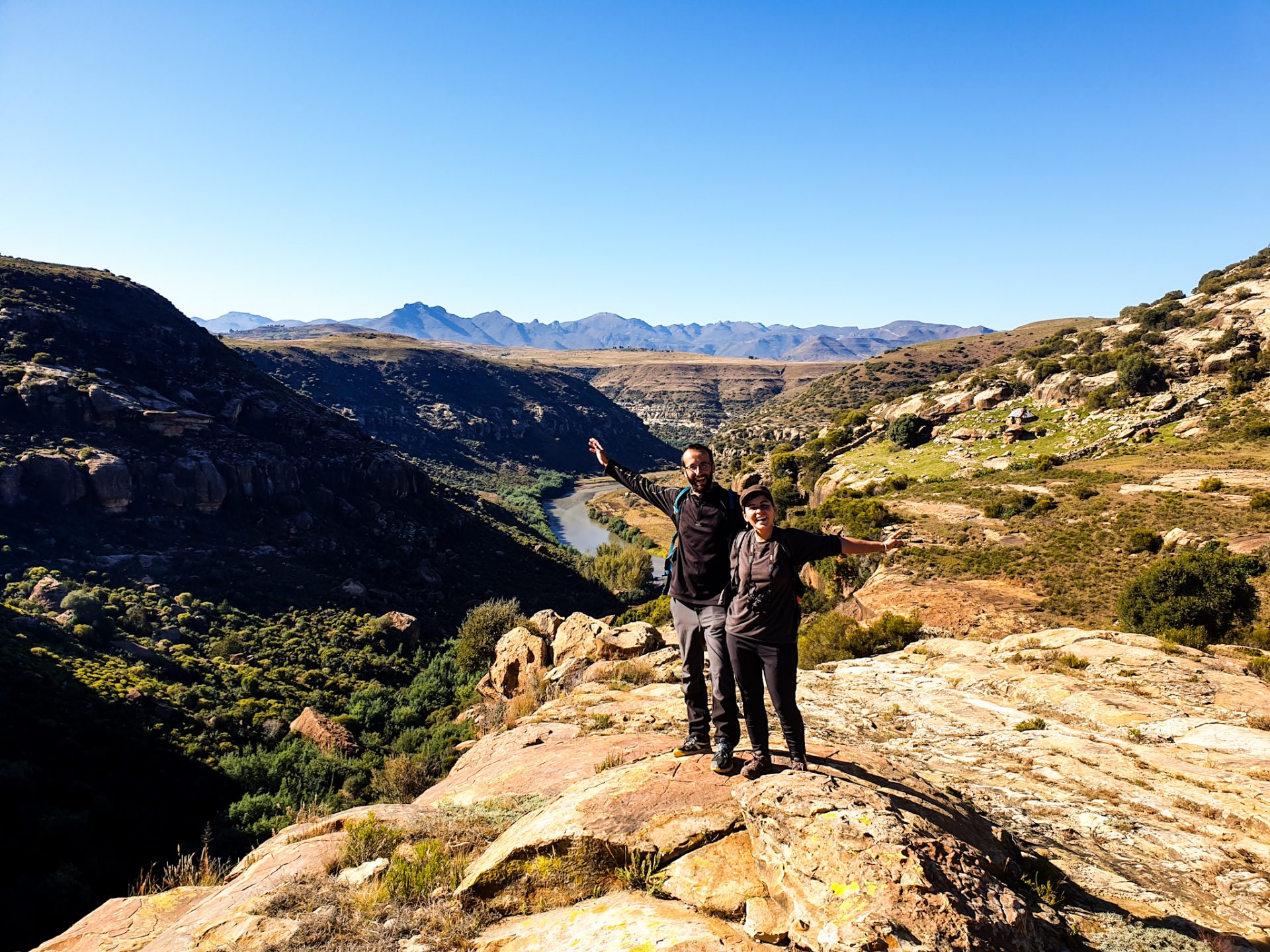
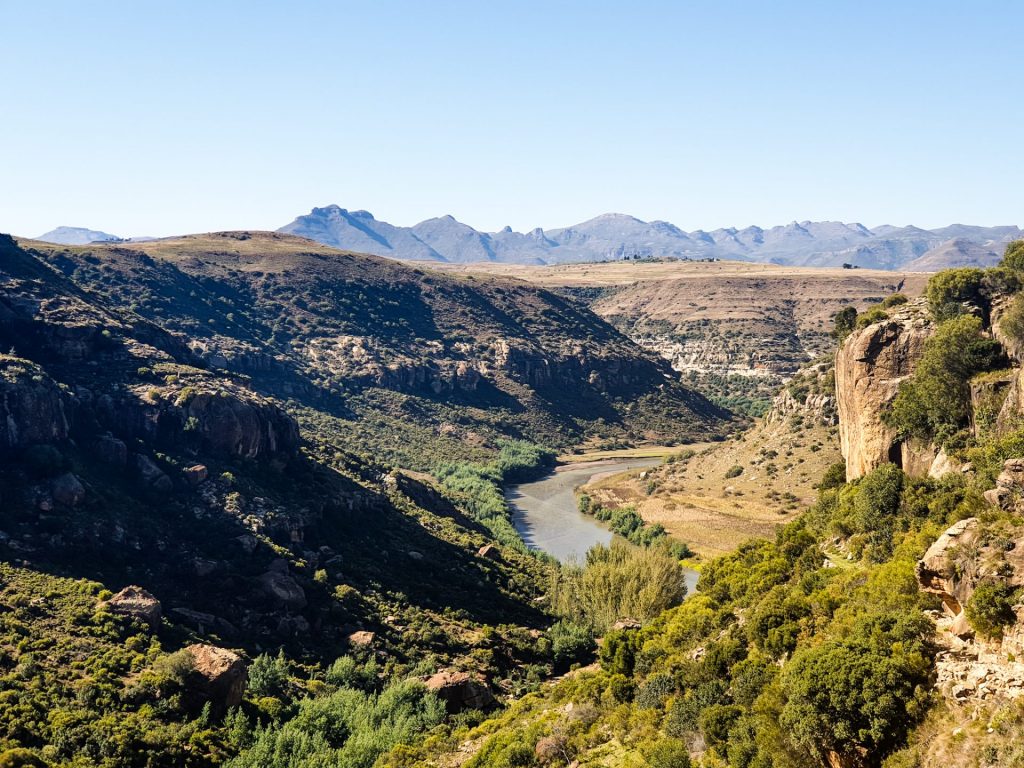
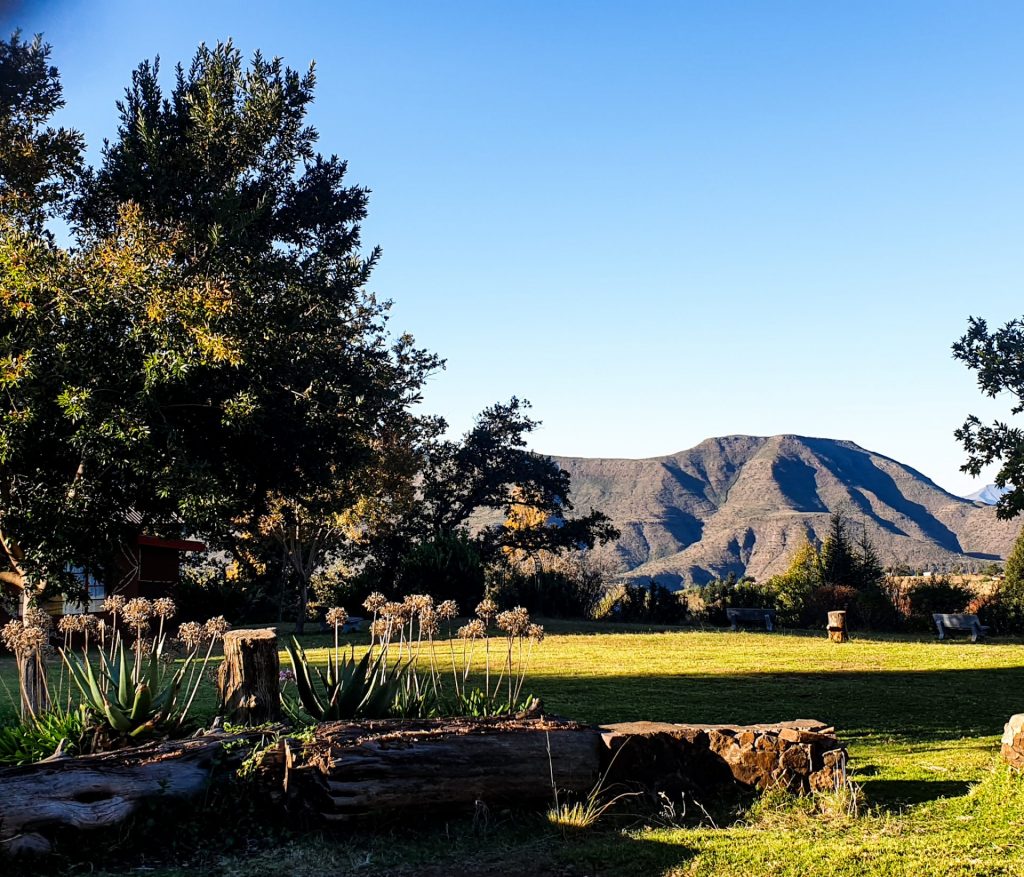



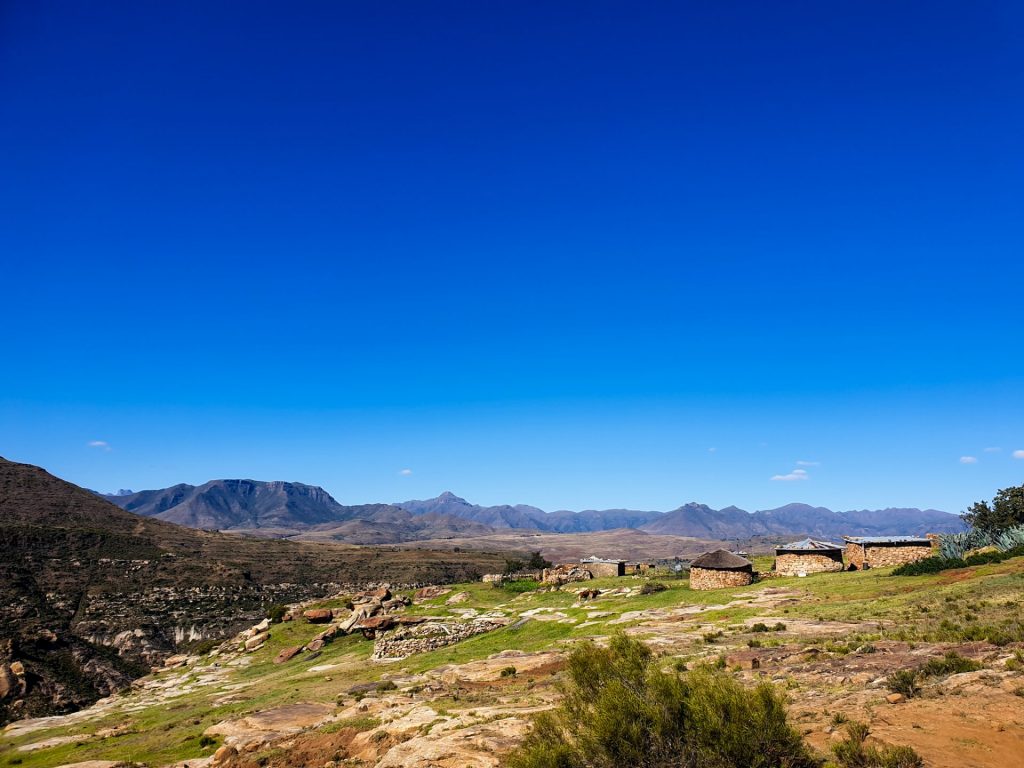


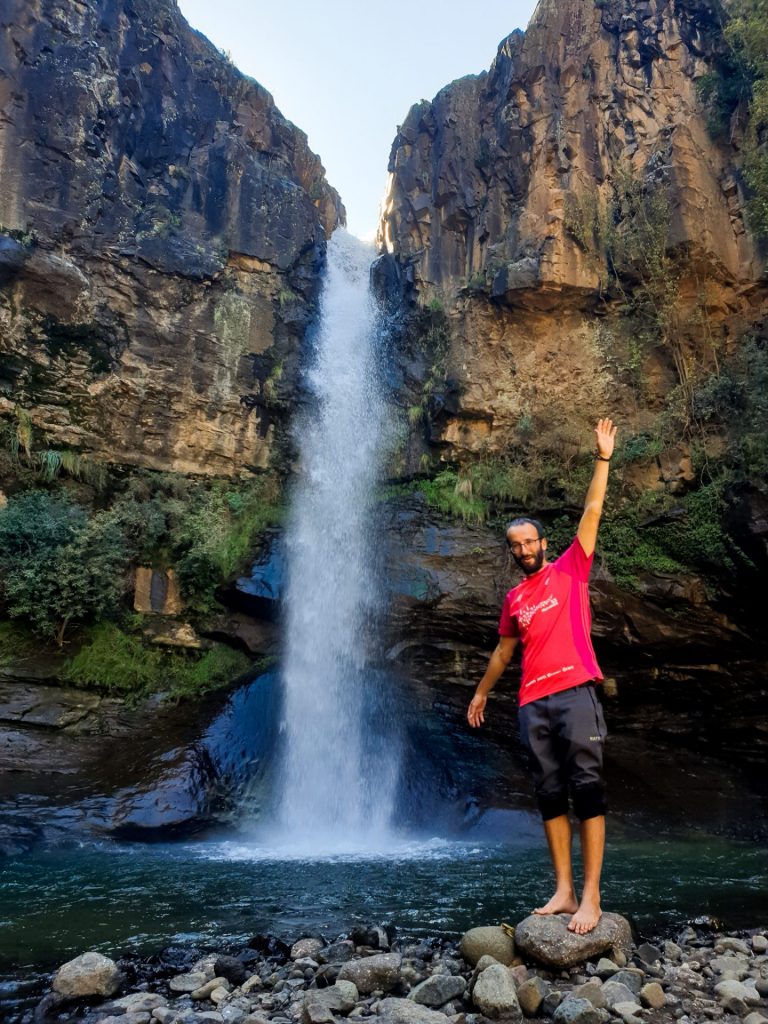
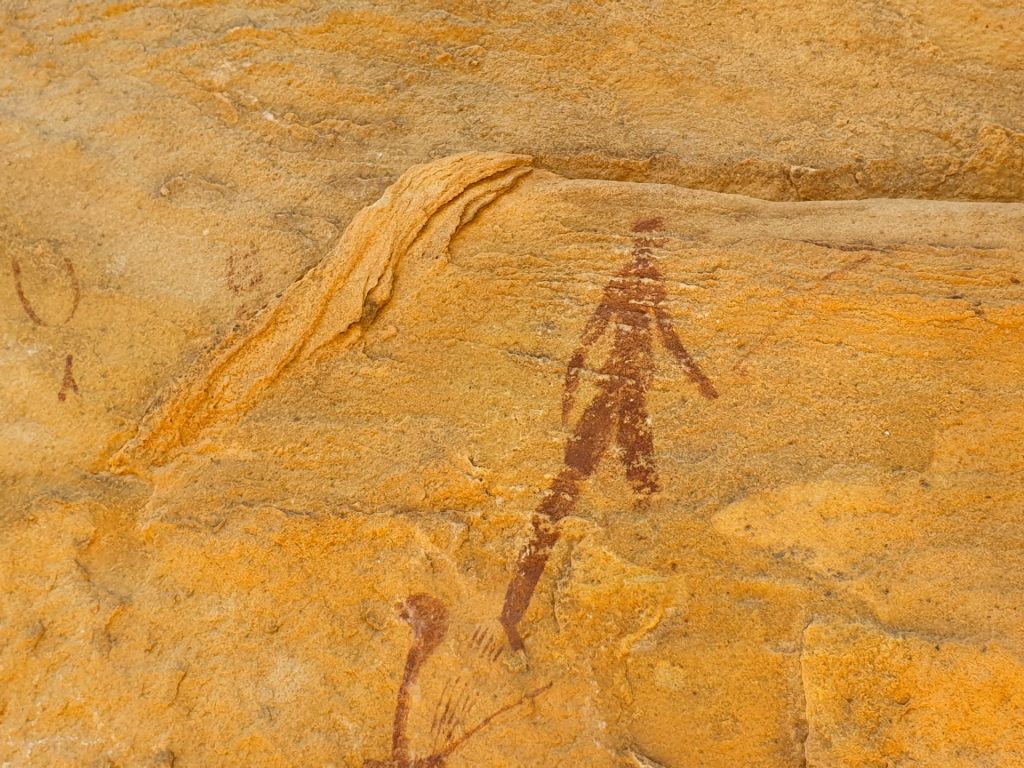
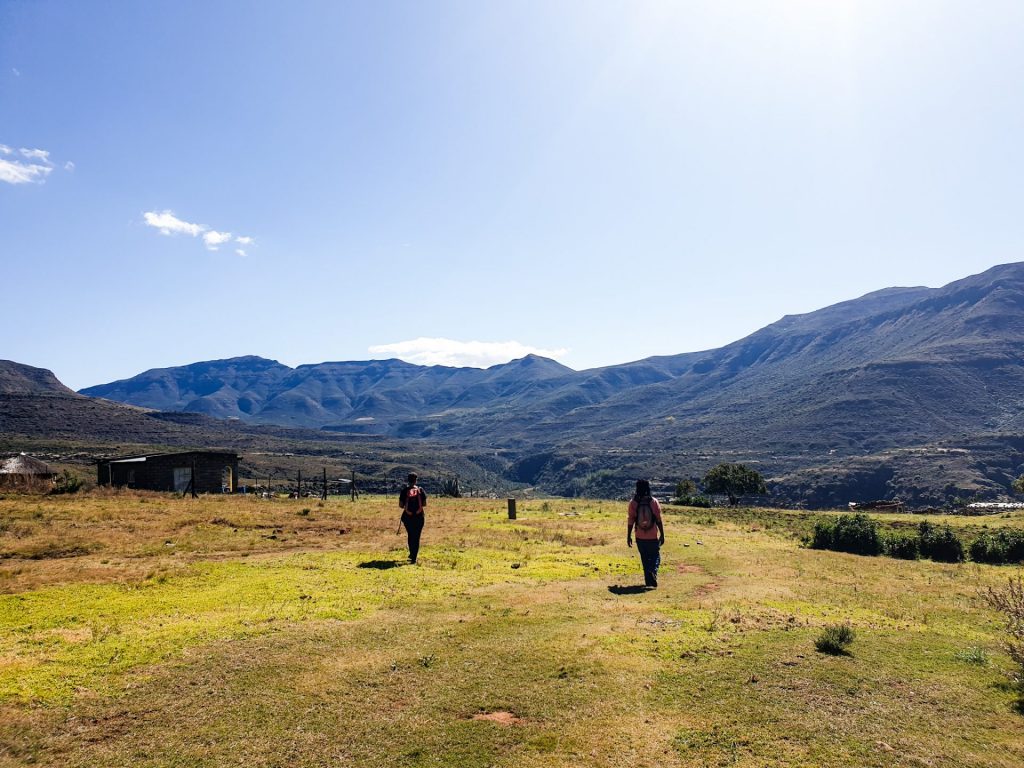




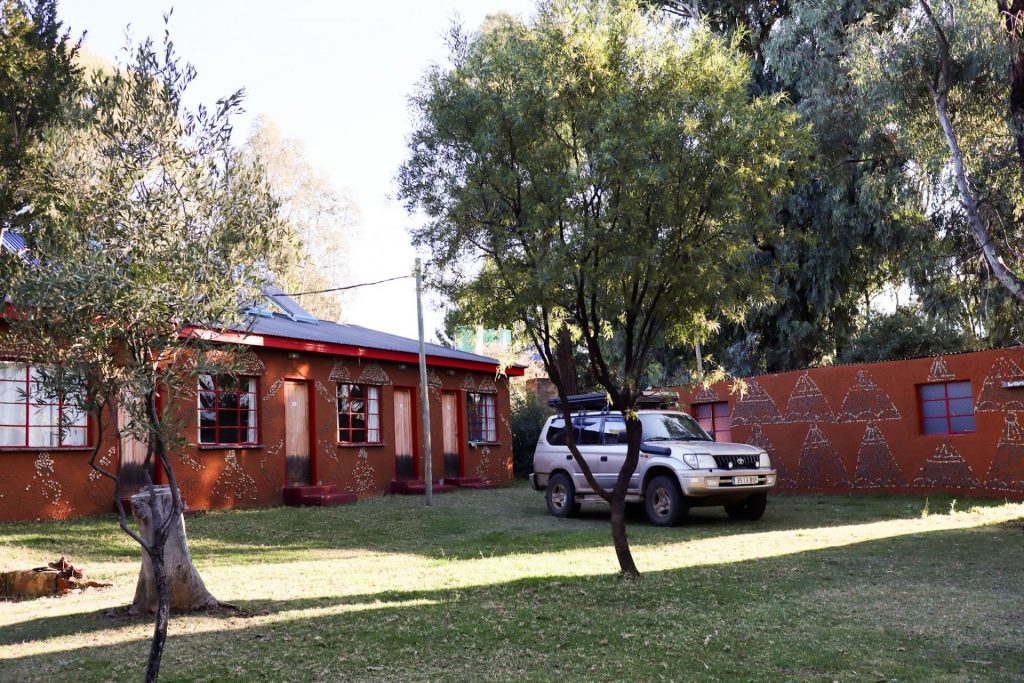
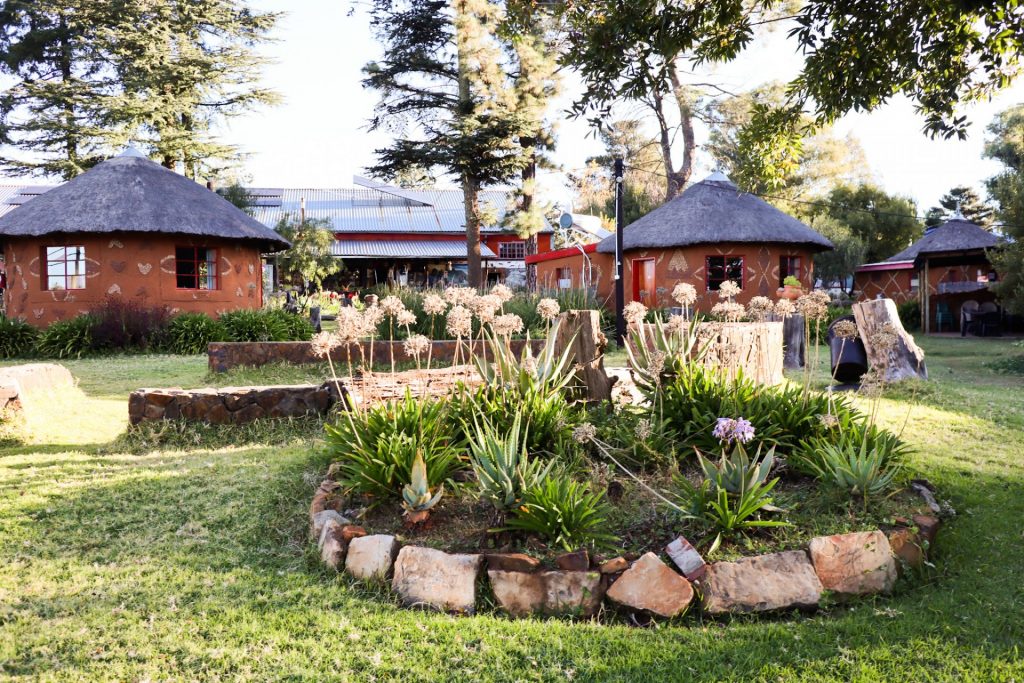

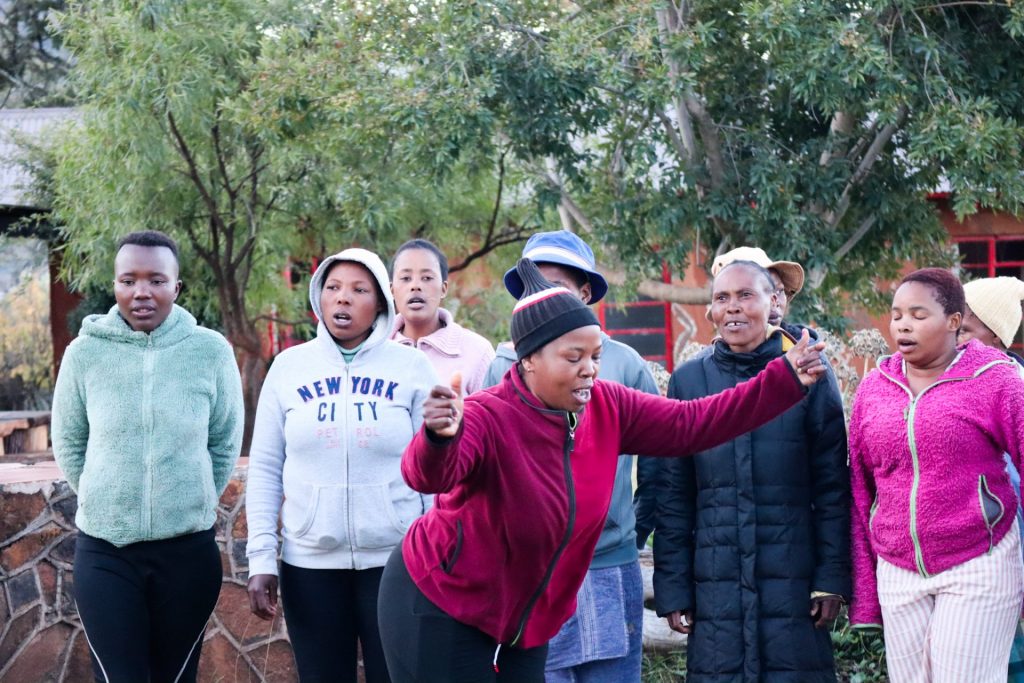
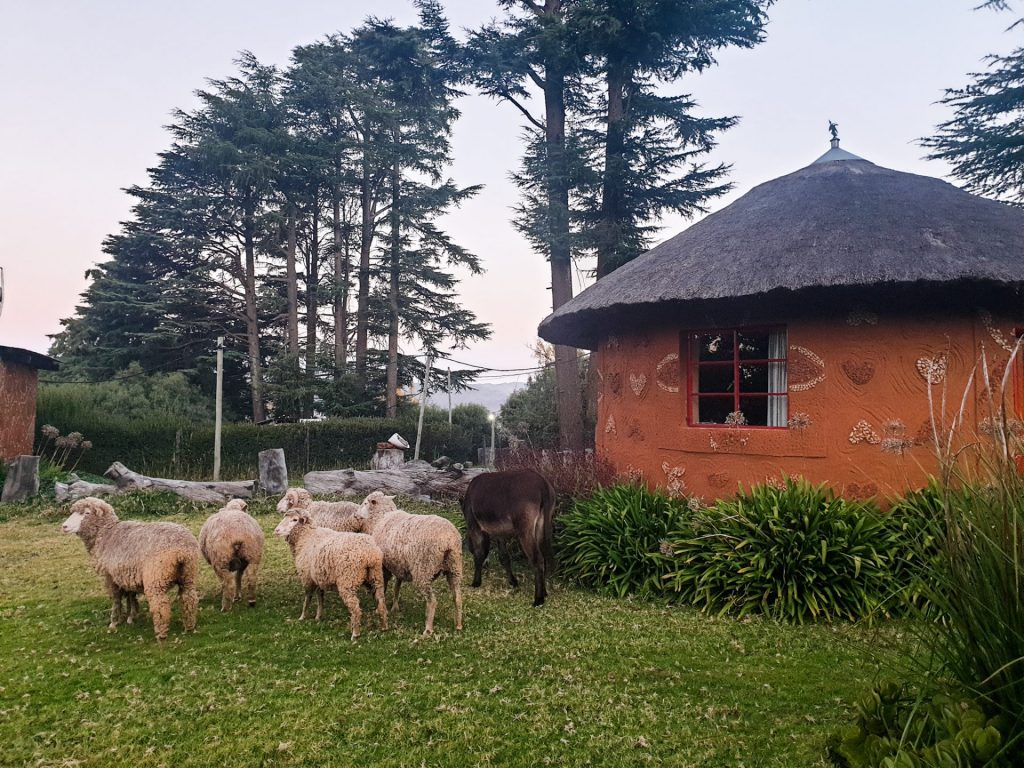

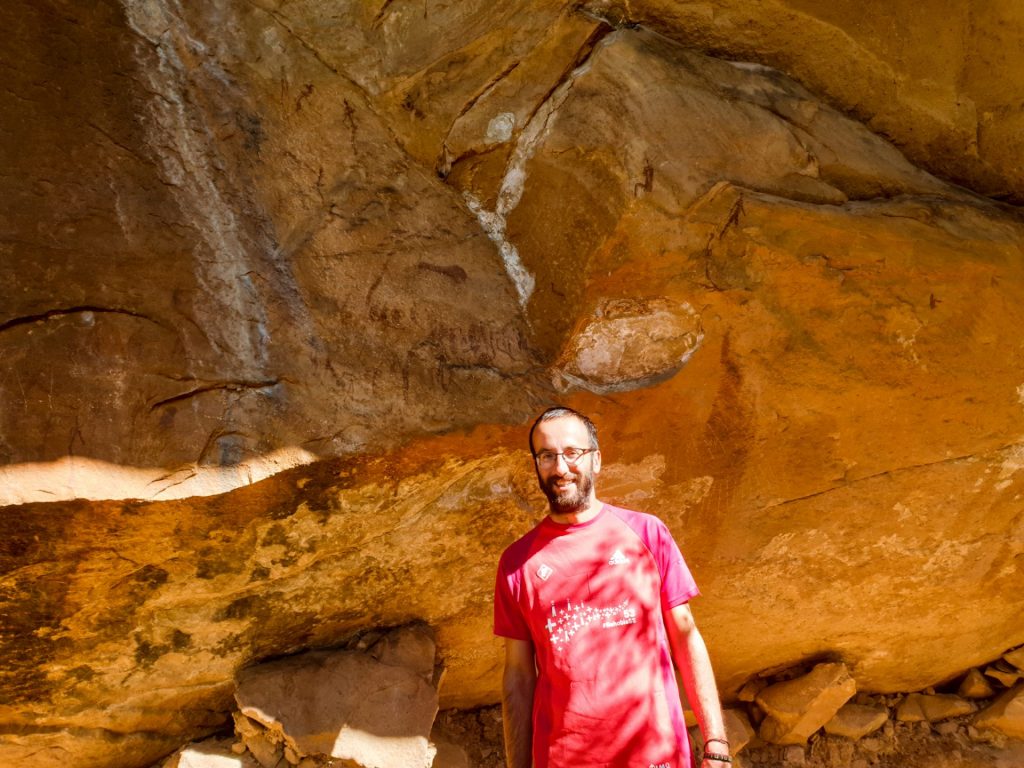
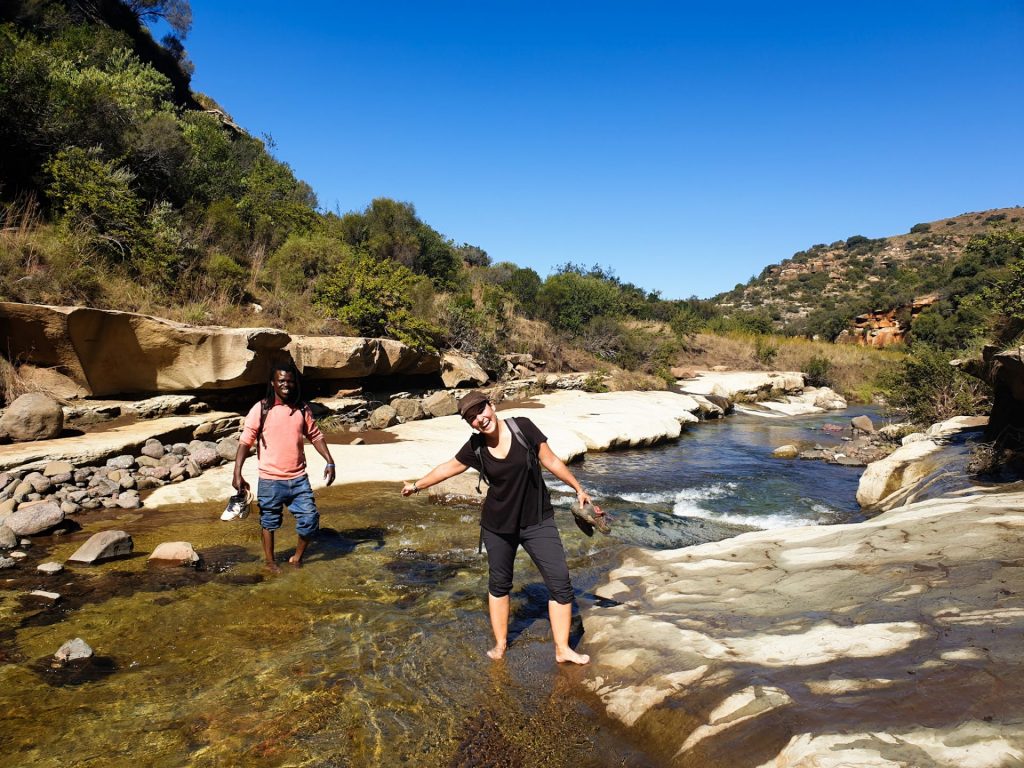

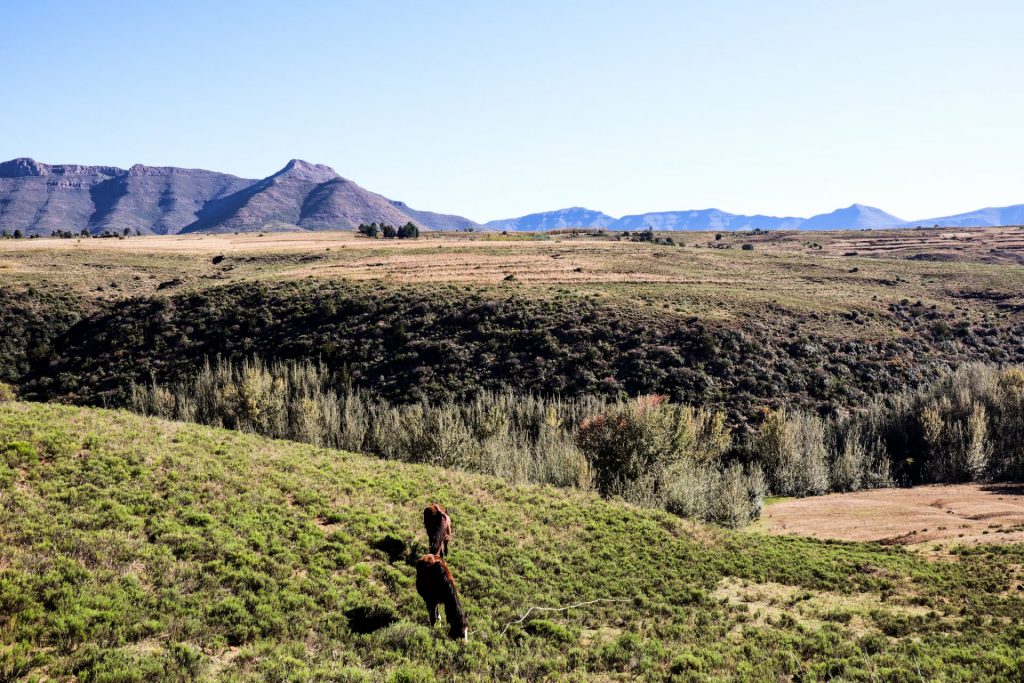
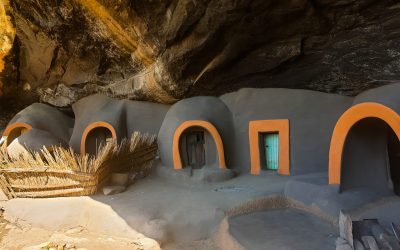
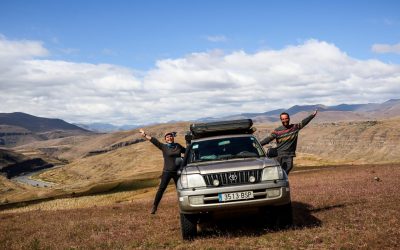

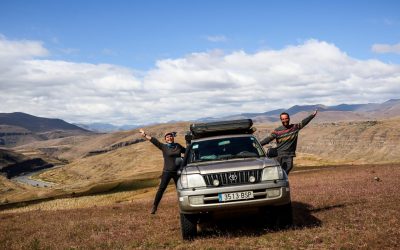


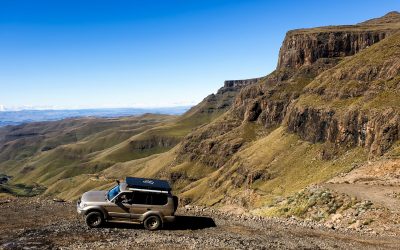

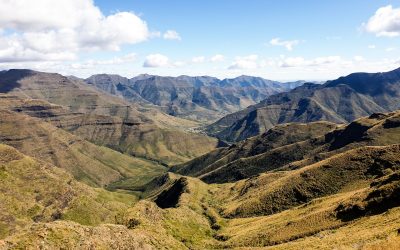
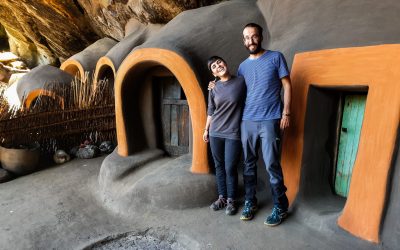
0 Comments